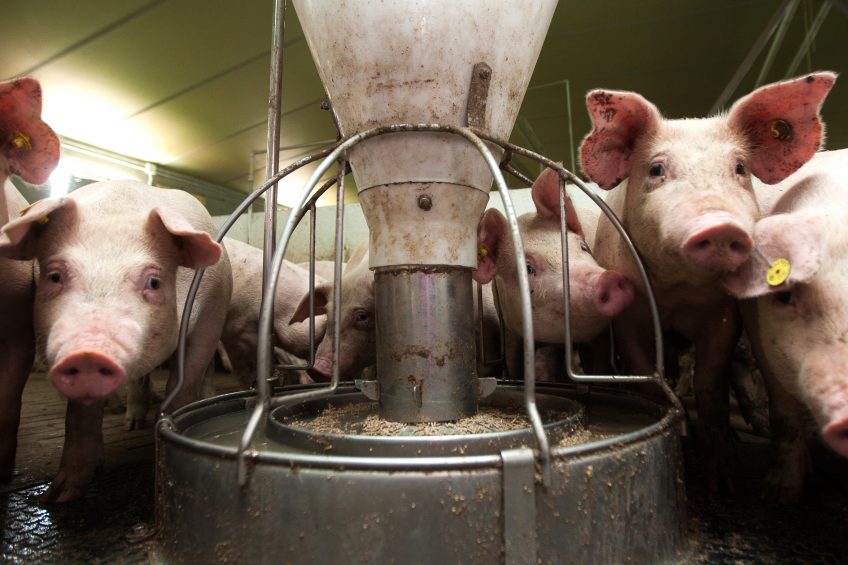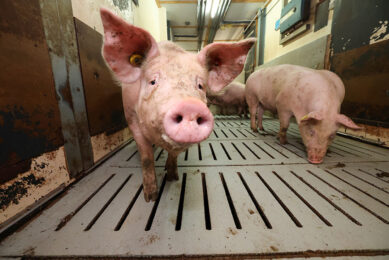The power of Alpha-monolaurin

Alpha-monoglycerides, and especially alpha-monolaurin, are a powerful tool to reduce or replace antibiotic usage in the production of food producing animals. Numerous trials have proven their antimicrobial effects.
As antibiotic resistance is a real problem in veterinary and human medicine, the antibiotic usage in livestock must be reduced. Alternative antimicrobial products for animals are needed to overcome diseases and to prevent further development of resistance. Medium chain fatty acids (MCFAs) can promote animal health and performance. Back in 1972 it was already discovered that alpha-monoglycerides of MCFAs, especially alpha-monolaurin, had stronger anti-bacterial properties compared to the corresponding free fatty acids. More recently, Batovska et al., 2009 found similar results. Research on alternatives to reduce antibiotic usage in livestock is still ongoing as in vitro results need to be confirmed at farm level.
Benefits of alpha-monolaurin
Alpha-monolaurin is known for its strong antibacterial and anti-viral effect and is formed by the esterification of lauric acid to the first position on a glycerol molecule. Alpha- monolaurin interferes with the cell membrane of Gram-positive bacteria and fat enveloped viruses. This destabilises the membrane, increasing its permeability which can induce cell leakage and cell death. Furthermore, monolaurin has shown to block the production of harmful exo-proteins of Staphylococcus. This paves the way for its use in non-antibiotic programmes to improve animal health and performance.
To understand the antibacterial properties of alpha-monolaurin compared to different antibiotics several MIC tests have been carried out. Manohar et al., (2013) conducted a MIC test and Minimum Bactericidal Concentration (MBC) test with different antimicrobial agents against S. aureus strains. The tested antibiotics were: vancomycin, amoxicillin, methicillin, penicillin and streptomycin. Monolaurin had a lower MIC and MBC compared to these different antibiotics. This means that in this test alpha-monolaurin was able to stop the growth of the bacteria at a lower concentration compared to the antibiotics. Coconut oil (refined, bleached and deodorised), which contains high levels of MCFA’s as triglycerides, was also incorporated in this study and didn’t have the ability to kill the tested bacterial strains. The study of Kabara et al. (1972) already showed that triglycerides have no antimicrobial effect, whereas monoglycerides have.
Against antibiotic resistant bacteria
Another outstanding observation from the study of Batovska et al. (2009) was the activity of monolaurin against a methicillin-resistant strain of S. aureus. Moreover, Ruzin and Novick (1998) discovered that monolaurin blocked the growth of vancomycin-resistant Enterococcus faecalis. The strong antimicrobial effects of monolaurin compared to antibiotics are also shown by MIC tests performed by Preuss et al. (2005). These results show that where S. aureus was resistant to penicillin at 0.063 mg/ml, the bacteria didn’t grow at the same concentration of monolaurin. In the case of Helicobacter pylori amoxicillin and monolaurin were both cidal at the same concentration of 0.063 mg/ml (Table 1). This indicates that at least for H. pylori monolaurin and amoxicillin has the same growth inhibition abilities in this test.
In the field, AGP’s can be replaced in the feed by alpha-monoglycerides in countries where AGPs are still permitted. In the European Union there has been the ban of AGP’s since 2006, but consequently the therapeutic usage of antibiotics may be high if animals get sick. Recently, Framelco performed a trial at Innsolpig, a commercial pig farm with research facilities in Belgium, which has problems with E. coli and Streptococcus suis. In total 480 piglets were used in this trial. Piglets were weaned at 21 days of age and had an average body weight of 5.5kg at the start of the trial. The aim of the trial was to replace zinc oxide with glycerides of fatty acids. All piglets received the same basal diet. Treatment group 1 received 4kg Fra LAC34 Dry (containing a mix of lactic acid, monobutyrin and monopropionin)/tonne of feed plus 4kg Fra C12 Dry/tonne of feed. Treatment group 2 received 2kg zinc oxide/tonne of feed, which is equal to 1606.8 ppm zinc.
Table 2 shows the data of the trial. The data showed similar results between the different treatment groups. The use of therapeutic dosages of ZnO could be replaced by a mixture of alpha-monoglycerides, without increasing the usage of therapeutic antibiotics.
In conclusion, the supplementation of alpha-monoglycerides to the diet will improve animal performance and health. As a result the usage of antibiotics as AGPs or as therapeutic treatment can be reduced. Scientific literature and trials in experimental facilities support the findings in the field, showing the strong antibacterial effects of alpha-monolaurin compared to different antibiotics.






